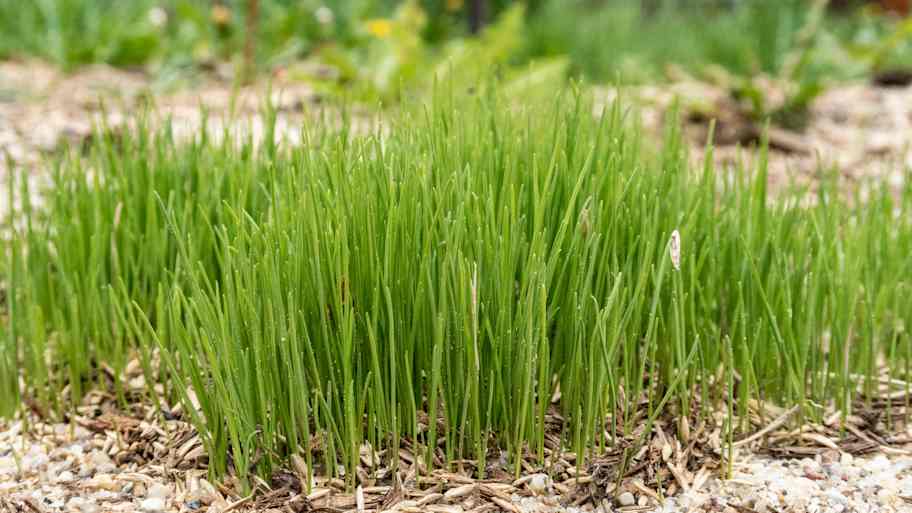
Discover the cost to fertilize your lawn, including average prices, key factors, and tips to help homeowners budget for a lush, healthy yard.
Know your 18-6-12s from your 10-10-10s


Grass relies on three nutrients: nitrogen, phosphorus, and potassium.
Fertilizers come in NPK ratios of the three main grass nutrients.
Test soil to find NPK levels before purchasing fertilizer.
It’s time to fertilize your lawn for the growing season, but staring at the rows of fertilizer bags at the home improvement store leaves you with far more questions than answers. What do N, P, or K stand for, and which ratio is best? Should you pick up that bag of 10-10-10, or would an 18-6-12 be more suitable for your lawn? Knowing the different grass nutrients and ratios and how they impact soil health is essential to keeping your grass alive and well.
There are three main nutrients in fertilizers: nitrogen (N), phosphorus (P), and potassium (K). Many lawn fertilizers have a balanced ratio of these three nutrients, but not all lawns require the same amounts of all three grass nutrients. You’ll need to know what your soil is missing and how each of these nutrients impacts your yard.
Those bright, green grass blades? Yeah, you can thank nitrogen for that. Nitrogen is crucial for lush, green grass that grows strong and tall. Most of the time, soil is more quickly depleted of nitrogen, so you may find that you need a fertilizer with higher quantities of nitrogen compared to the other two main grass nutrients.
Phosphorus is beneficial for grass roots and will help your lawn withstand the elements. It is also necessary for energy transfer and conversion in plants. But phosphorus tends to stick around in soil for longer, so be careful with adding more of it to your lawn. Excess phosphorus can leach into local waterways, causing pollution.
Potassium is responsible for activating grass enzymes for growth and improving grass’s natural ability to withstand pests and extreme temperatures. This grass nutrient also makes water intake more efficient. Avoid applying too much potassium, though, or it can deplete nitrogen and phosphorus levels.
Fertilizer labels include N-P-K ratios, or ratios of the three grass nutrients. A 10-10-10 ratio means the fertilizer contains 10% nitrogen, 10% phosphorus, and 10% potassium. You may also find fertilizers that contain just one of the nutrients; for example, a 39-0-0 slow-release fertilizer has 39% nitrogen, 0% phosphorus, and 0% potassium.
This can come in handy if your soil is low in only one nutrient, so you can add a fertilizer that boosts grass nutrient levels of just nitrogen, for example, without adding more phosphorus that leads to an excess of that nutrient.

To find the right fertilizer, you’ll need to find out your grass nutrient levels with soil testing. From there, you can better judge the fertilizer ratios you’ll need to improve your lawn’s health.
Before you start dumping fertilizer all over the lawn, you’ll need to perform a soil test. You can find a testing kit online, at home improvement stores, or nurseries. You’ll collect soil samples, then either send them in for lab testing or, for at-home tests, the kit will give you a general idea of the soil pH and whether you have too much, adequate, or too little amounts of phosphorus, nitrogen, and potassium.
Most grasses do well with a soil pH of 6.5 to 7, which is slightly acidic to neutral. Too high, and the grass will struggle to absorb the nutrients from fertilizer or compost. Too low, and weeds like dandelions could take over your lawn.
Manufacturers specifically create some fertilizers to bring soil pH down, but in general, using fertilizer as directed along with proper watering and mowing can help maintain a balanced pH for healthy grass and fewer weeds.
Your soil test results will show your nutrient levels, which you can use to find the right N-P-K ratio in a conventional or organic fertilizer for your lawn.
If nitrogen levels are low, but you have adequate amounts of phosphorus and potassium, you may opt for a fertilizer with a 12-0-0 ratio. On the other hand, general-purpose fertilizers will have a more balanced ratio of grass nutrients and are ideal for fertilizing new grass seeds.
Nitrogen-rich fertilizers may help boost grass color and growth in the growing season, so consider a fertilizer, like a 16-6-4, for a vibrant yard. Fertilizers with higher amounts of phosphorus and/or potassium might not be necessary for your grass, but they can help improve fruit products or root growth in other types of plants.
If you still aren’t sure what fertilizer is right for your lawn, hire a local lawn care service to find out what your grass needs and ensure your grass looks its best.
From average costs to expert advice, get all the answers you need to get your job done.

Discover the cost to fertilize your lawn, including average prices, key factors, and tips to help homeowners budget for a lush, healthy yard.

Discover average lawn aeration cost, key price factors, and tips to save. Get a clear estimate for your yard and learn how to choose between DIY and hiring a pro.

Discover average hydroseeding cost, key price factors, and ways to save. Get transparent estimates for your lawn project and make informed decisions for your home.

When your grass keeps dying where a tree used to be, it’s likely because there is a nutrient deficit in the soil in that area. Here’s how to fix it.

Brown patches on your lawn may occur for several reasons, including lack of sunlight and overfertilization. Learn how to treat and prevent patches.

Ready to give your yard a fresh start? With these tips for grass seed planting, your lush lawn dreams are one step closer to becoming a reality.